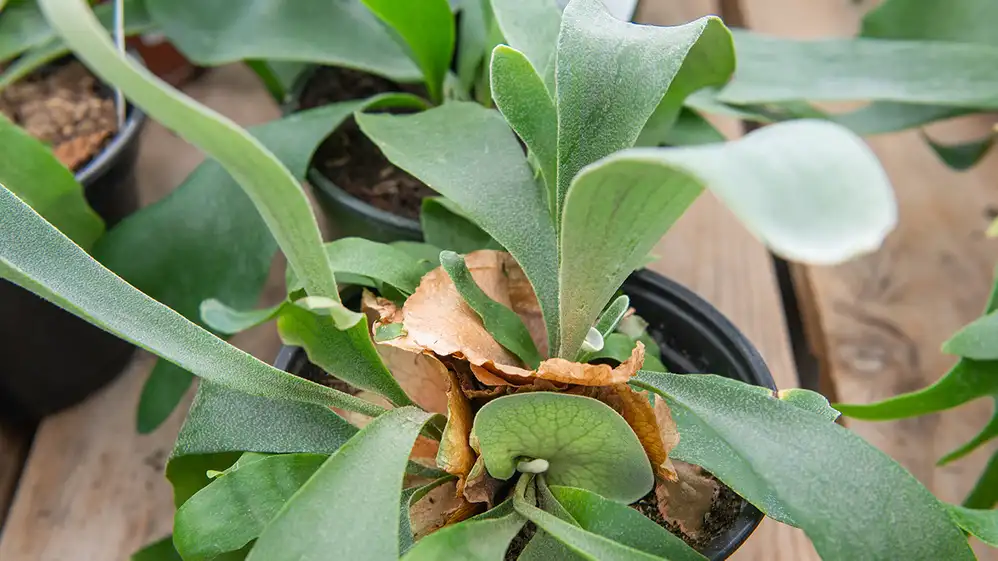Staghorn ferns have become increasingly popular among gardening enthusiasts due to their unique appearance and low maintenance requirements. However, the question on many gardeners’ minds remains: Are Staghorn Ferns Easy to Grow?
The good news is that staghorn ferns are relatively easy to grow, even for beginners. With the right care and attention, they can thrive in a variety of conditions and add a touch of natural beauty to any space. In this article, we’ll explore the ins and outs of growing staghorn ferns and provide tips for beginners looking to cultivate these plants in their gardens.
Key Takeaways
- Staghorn ferns can be grown by beginners with the right care.
- These unique plants add natural beauty to any space.
- With proper care and attention, staghorn ferns can thrive in a variety of conditions.
- Planting techniques and maintenance tips are crucial for ensuring optimal growth and well-being of staghorn ferns.
- Understanding the watering requirements of staghorn ferns is essential to prevent over or under-watering.

Growing Staghorn Ferns: A Beginner’s Guide
Staghorn ferns are unique and fascinating plants that can be a great addition to any garden. Whether you are a seasoned plant enthusiast or a beginner, growing staghorn ferns is a rewarding experience that can add a touch of natural beauty to your living space.
To ensure the optimal growth and health of your staghorn ferns, it’s essential to follow a few basic care guidelines. Here are some best practices for growing staghorn ferns:
Staghorn Ferns Care Guide
Staghorn ferns are epiphytes, which means they grow on other plants, not in soil. To mimic their natural habitat, mount them on a wooden board or hang them in a basket.
The first step to growing healthy staghorn ferns is to provide the right environment for them to thrive. Staghorn ferns prefer humid environments, so they are perfect for areas such as bathrooms or kitchens. If you don’t have a naturally humid space, you can also mist your plants regularly to provide the necessary moisture.
- Lighting: Choose a spot that provides bright, indirect light for your staghorn ferns. Avoid direct sunlight as it can damage the leaves.
- Soil: Staghorn ferns do not grow in soil, and instead, absorb nutrients and moisture from their surroundings. Use a well-draining medium such as peat moss or coconut coir to mount your ferns.
- Watering: Water your staghorn ferns regularly but allow the mounting material to dry out between watering. Over-watering can cause root rot and kill the plant.
Following these simple guidelines will help you maintain healthy and beautiful staghorn ferns that will thrive in your garden. With a little care and attention, these unique plants can be a stunning addition to any living space.
Planting Staghorn Ferns: Tips for Success
Before planting your staghorn ferns, take note that these plants are epiphytes, which means that they grow on other plants or surfaces such as bark or rocks, not in soil. Follow these tips for successful planting:
- Choose the right container: When planting staghorn ferns, opt for containers or baskets that allow for good drainage and air circulation. Many gardeners prefer using wire baskets lined with sphagnum moss or coconut coir.
- Prepare the soil: Do not use regular soil as staghorn ferns prefer a well-draining, nutrient-rich mixture. A popular choice is a blend of orchid bark, peat moss, and perlite.
- Securely attach the fern: Gently nestle the root ball of the fern into the prepared soil and securely attach it to the container or basket using wire or twine. Alternatively, you can mount the fern on a board or other surface instead of using a container.
- Provide the right light: Staghorn ferns thrive in bright, indirect light. Place them near a window that gets plenty of filtered sunlight or in a shaded area of your garden.
- Water appropriately: When planting staghorn ferns, water them well but be sure not to overwater them. Allow the soil to dry out slightly between watering. Feel the top of the soil to determine if it’s dry before watering again.
- Monitor placement: When deciding where to place your staghorn ferns, consider factors such as humidity and temperature. These plants prefer a warm, humid environment, so avoid placing them in overly dry or cold areas.
Tip: To enhance the appearance of your staghorn ferns, you can add decorative moss or other natural elements such as bark or rocks to the container or basket.
By following these planting tips, you can ensure optimal growth and development of your staghorn ferns. With proper care, these unique plants will make a stunning addition to your garden or indoor space.
Maintaining Staghorn Ferns: The Key to Longevity
Staghorn ferns are not only unique and beautiful, but they also require proper maintenance to thrive. Below are some important tips to help you ensure the longevity of your staghorn fern.
Indoor Staghorn Fern Care
Staghorn ferns are excellent indoor plants, adding a touch of green and nature to your living space. However, it’s important to keep in mind their specific care requirements to ensure they remain healthy indoors.
First and foremost, staghorn ferns require bright, indirect light. Placing them near a window with filtered light or using artificial grow lights can help ensure they receive the necessary light to thrive.
It’s also important to keep the humidity levels high, ideally between 60-80%. You can achieve this by misting the leaves regularly with a spray bottle, or placing a tray of water nearby to increase the moisture in the air.
Finally, make sure to keep your staghorn fern away from cold drafts or extreme temperature changes, as they prefer warm and stable conditions.
How to Maintain Staghorn Ferns
Proper maintenance is key to the longevity of staghorn ferns. Here are some important tips to keep in mind:
- Watering: Staghorn ferns require frequent watering, but it’s important not to overwater them. The best way to determine when to water your fern is by touching the shield fronds—the hard, outer layer of leaves. If they feel dry to the touch, it’s time to water. However, if they feel damp, hold off on watering for a while.
- Fertilizing: Staghorn ferns benefit from regular fertilization, especially during their growing season in spring and summer. Use a balanced, water-soluble fertilizer and dilute it to half strength before applying.
- Grooming: Regular grooming can help keep your staghorn fern looking healthy and attractive. Remove any dead or yellowing leaves, and gently wipe down the shield fronds with a damp cloth to remove any dust or debris.
By following these tips for indoor care and maintenance, you can help ensure your staghorn fern remains happy and healthy for years to come.
Watering Staghorn Ferns: Finding the Perfect Balance
Watering staghorn ferns can be a delicate balancing act, as these plants have specific requirements that must be met to thrive.
The general rule of thumb for watering staghorn ferns is to keep the base of the plant slightly damp, but not waterlogged. Overwatering can lead to root rot, while underwatering can cause the plant to dry out and wither.
One way to achieve the perfect balance is to water the ferns thoroughly and then allow the soil to dry out slightly before watering again. For indoor plants, this may be once a week, while outdoor plants may require watering every 2-3 days during hot weather.
It’s also important to consider the type of water used for irrigation. Staghorn ferns prefer water that is free of chlorine and other chemicals, so using rainwater or distilled water is ideal.
In winter, staghorn ferns enter a period of dormancy, which means they require less water. During this time, it’s essential to reduce watering to prevent the plant from becoming waterlogged and to avoid excessive humidity.
By following these watering guidelines and paying attention to the needs of your staghorn ferns, you can ensure their optimal growth and health for years to come.
Conclusion: Are Staghorn Ferns Easy to Grow?
Staghorn ferns might seem intimidating to some, but with the right care and knowledge, they can be easy to grow and maintain. Here are some care tips to help you succeed:
1. Light
Staghorn ferns need bright, filtered light to thrive. Avoid direct sunlight, as it can scorch their leaves. If grown indoors, place them near a north or east-facing window with natural light.
2. Watering
Watering staghorn ferns can be a bit tricky. Allow their soil to dry out slightly before watering. Over-watering can lead to root rot, while under-watering can cause the fern to dry out.
3. Fertilizing
Staghorn ferns do not need regular fertilizing, but you can give them a boost during the growing season. Use a balanced fertilizer once every few months to promote healthy growth.
4. Temperature
Staghorn ferns prefer warm temperatures between 60-80°F. However, they can tolerate cooler temperatures as long as they are not subjected to frost.
5. Pruning
Prune off any dead or yellowing leaves to promote new growth. You can also divide your fern if it outgrows its container.
By following these care tips, you can successfully grow and maintain staghorn ferns in your garden or indoors. With their unique appearance and low-maintenance care requirements, staghorn ferns are a great choice for any plant enthusiast.












